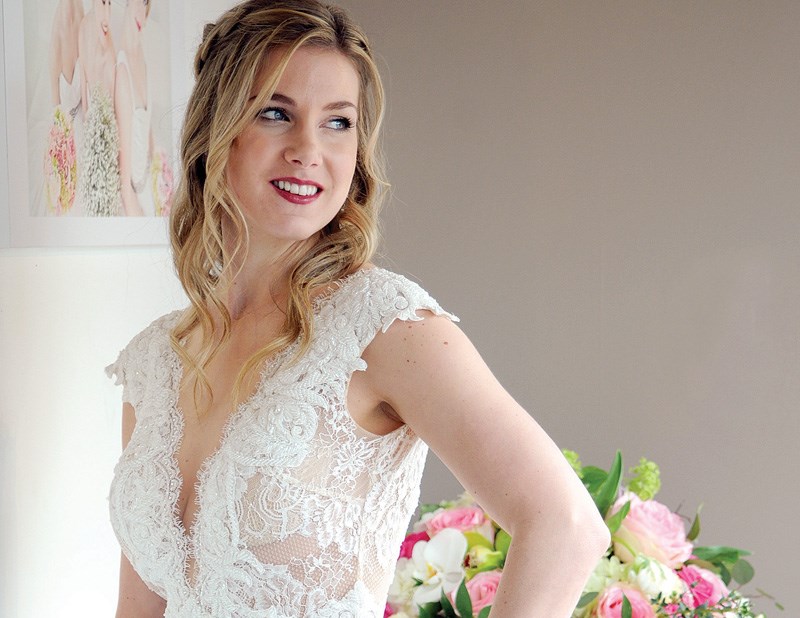Brides, whether you’re getting married in two months, six months or in a year and a half from now, it’s never too early to start looking for your wedding gown.
It’s best to “start shopping at least one year before your wedding,” says Kasia Bulva who, along with her sister Basia Antos, owns Isabelle’s Bridal on Esplanade. “Generally gowns take six to eight months to come in once you’ve ordered them, and then it can take about a month and a half for alterations.”
When it comes to style, the options are as varied as the weddings themselves. “Fourteen years ago when I started doing this (job) weddings were very formal, you know, the hall weddings, or the church weddings, and a lot of celebrations were very much the same,” says Bulva.
Today, the ceremonies and receptions are often much more intimate, with fewer guests than in the past, and are just as likely to take place in a barn as they are in a church.
Same goes for the dresses, which today are more relaxed, ephemeral and romantic as opposed to the formal gowns of yesteryear. Brides are “really steering away from the big formality of the glamorous gown with tons of beading. It’s very organic now,” says Bulva, whose boutique sells custom-made and off-the-rack wedding gowns, bridesmaids dresses, flower girl dresses and gala wear.
So it makes sense that one of the biggest trends in bridal attire is a move towards separate tops and bottoms, where brides get to mix and match the pieces to suit their own tastes and styles. “People love that they have variety to choose from. Our most popular (outfit) is a chiffon or tulle skirt paired with a lace topper, a bustier or a silk cami,” says Patty Nayel, founding owner and designer at Pure Magnolia Gowns in North Vancouver.
Speaking of lace, “lace is always going to be in, it always has been in, but now it’s even stronger with the boho look,” says Antos. “We’re seeing a lot of brides go for the classic slim lace dresses,” agrees Nayel.
Shoes are another opportunity for brides to show their individuality. “The typical wedding shoe is out. Now it’s all about the coloured shoe, something with a statement, where the bride can lift her dress and then you’ve got that pop, whether it’s a blue shoe or something sparkly, or for the boho looks, something very natural,” Bulva says.
And those statement-making shoes are often flats, instead of the towering heels of days past, says Nayel. “Most brides nowadays are of similar height to their fiancès and they want to be comfortable.”
As for other accessories, Nayel explains that veils, which add a classic touch to the modern separates of today, are making a big comeback.
Whichever trend, or classic look, brides envision for themselves on the big day, Bulva says it’s a good idea to keep a few shopping tips in mind before they set out on the hunt.
First, be sure to make an appointment before heading into a store so that you get the full attention of the bridal consultants.
Next, know your budget for your wedding gown before you hit the shops. “The last thing you want, and we see this often, is to fall in love with a dress and then it be completely out of your reach as far as budget,” she explains.
Finally, it’s a good idea to “set your vision of what you want to look like on the big day, whether it’s the princess or the boho bride.”
But that last piece of advice comes with a caveat that may have also applied when deciding whom to marry, says Bulva: “Stay open minded: eight out of 10 brides say “Yes” to the dress they didn’t expect they were going to like.”



